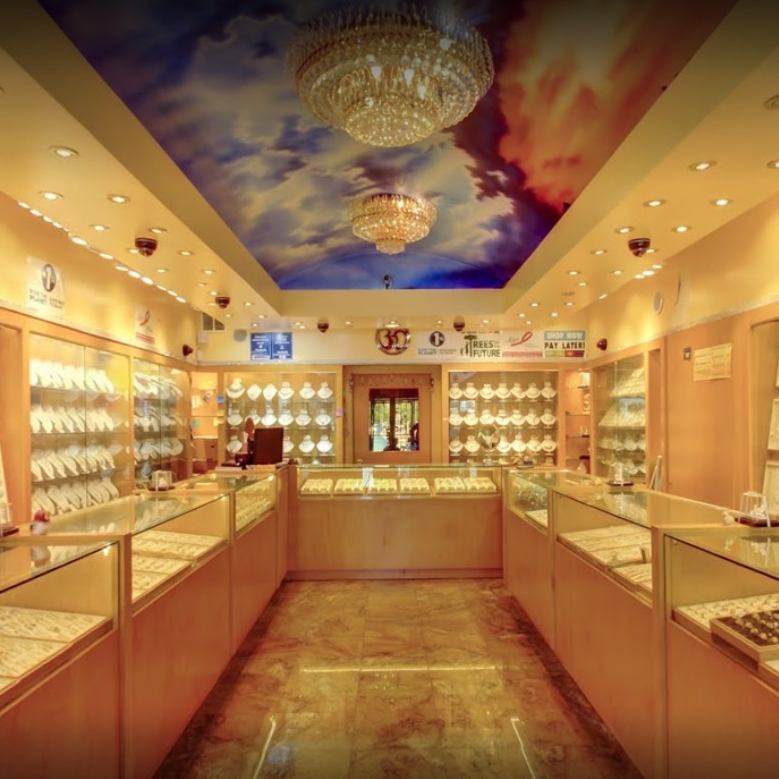Unveiling the Spectrum: Natural vs. Treated Colored Diamonds in Diamond Jewelry
Colored diamonds have captivated the imagination of jewelry enthusiasts for centuries, boasting a mesmerizing array of hues that range from delicate pinks to vibrant blues. However, when it comes to colored diamonds, there are two distinct categories: natural and treated. Understanding the differences between natural and treated colored diamonds is essential for both collectors and consumers seeking to invest in these exquisite gemstones. Let's explore the characteristics, origins, and implications of natural and treated colored diamonds in the realm of diamond jewelry.
Natural Colored Diamonds:
Natural colored diamonds are incredibly rare and prized for their unique beauty and authenticity. These diamonds derive their distinct hues from natural trace elements and structural irregularities present in the diamond crystal during formation. For example, yellow diamonds acquire their color from traces of nitrogen, while blue diamonds contain traces of boron. Pink diamonds owe their delicate hue to structural anomalies caused by intense pressure and heat deep within the earth's crust.
Natural colored diamonds are formed over millions of years under intense geological conditions, making them exceptionally rare and valuable. Their rarity, combined with their exquisite beauty and natural origin, makes them highly coveted by collectors and enthusiasts alike. However, the scarcity of natural colored diamonds also means that they command premium prices in the market, with certain hues fetching astronomical sums at auction.
Treated Colored Diamonds:
In contrast to natural colored diamonds, treated colored diamonds undergo enhancement processes to alter their appearance or improve their color. Common treatments for colored diamonds include irradiation, which exposes the diamond to high-energy radiation to alter its color, and annealing, which involves heating the diamond to high temperatures to enhance or modify its color. Other treatments may involve coating the diamond with thin layers of colored substances to achieve the desired hue.
Treated colored diamonds are more readily available and affordable compared to their natural counterparts, making them accessible to a broader range of consumers. While treated colored diamonds can exhibit stunning colors and brilliance, they may lack the rarity and value of natural colored diamonds. Additionally, treated colored diamonds may be subject to disclosure requirements to ensure transparency and consumer confidence.
Implications for Consumers:
For consumers, understanding the differences between natural and treated colored diamonds is crucial when making purchasing decisions. Natural colored diamonds are prized for their rarity, authenticity, and investment value, making them ideal for collectors and enthusiasts seeking to acquire truly unique and valuable pieces. On the other hand, treated colored diamonds offer an affordable alternative for consumers who desire the beauty of colored diamonds without the premium price tag.
When purchasing colored diamonds, consumers should inquire about the diamond's origin and whether it has undergone any treatments or enhancements. Transparency and disclosure are essential for ensuring that consumers make informed decisions and understand the value and characteristics of the diamonds they are acquiring. Whether choosing natural or treated colored diamonds, consumers can find exquisite pieces that capture the beauty and allure of these enchanting gemstones, adding a touch of glamour and sophistication to their jewelry collection.
In conclusion, both natural and treated colored diamonds offer stunning beauty and allure in the realm of diamond jewelry. Whether prized for their rarity and authenticity or chosen for their affordability and accessibility, colored diamonds continue to captivate the hearts and minds of jewelry enthusiasts around the world. By understanding the distinctions between natural and treated colored diamonds, consumers can make informed decisions and acquire exquisite pieces that reflect their unique style and taste.

















